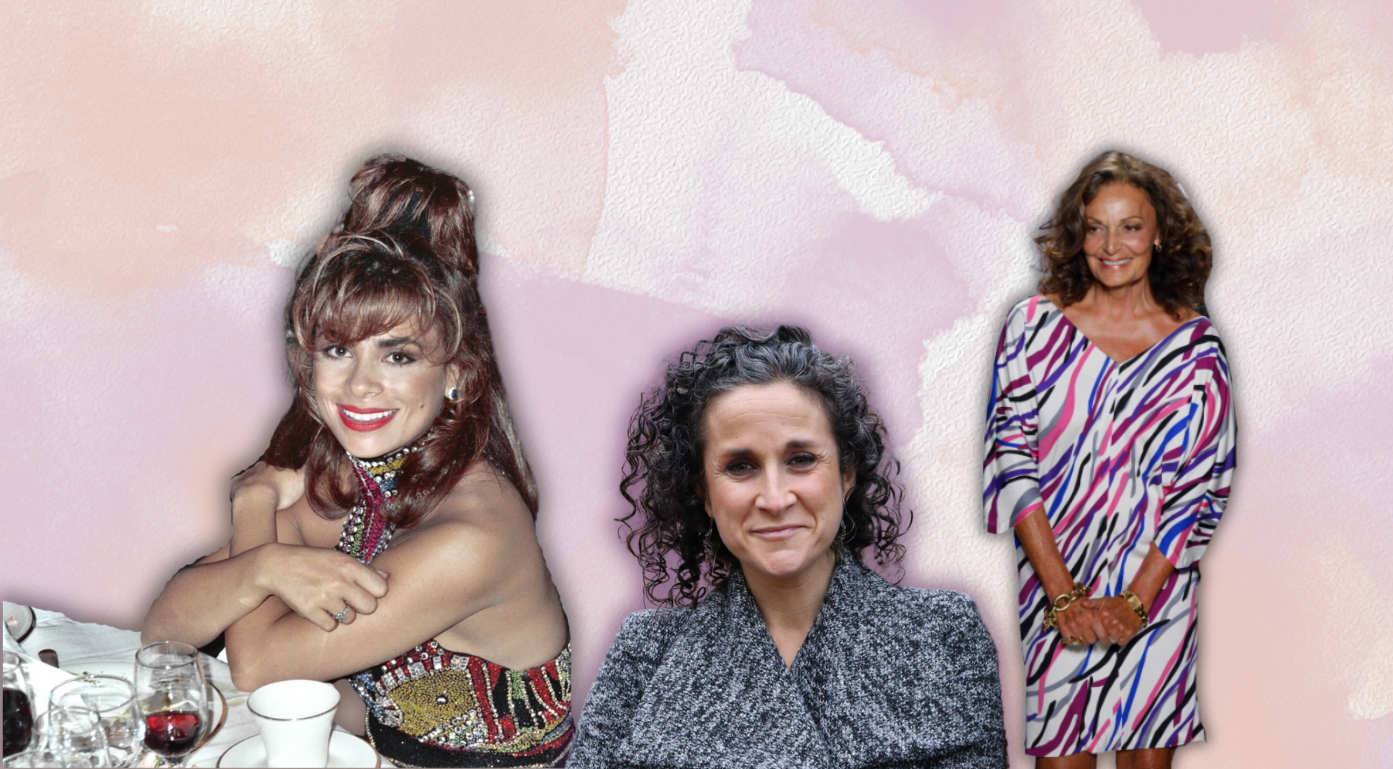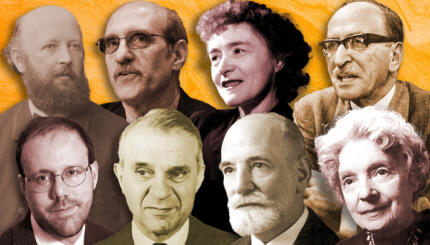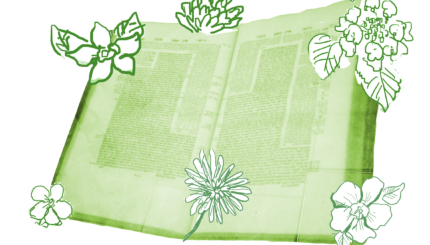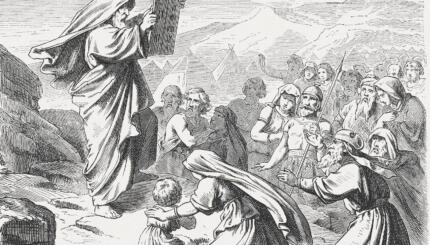Jewish women with roots in medieval Spain, North Africa, and the Middle East, collectively known as Sephardi and Mizrahi Jews, have been part of American life since European colonization began in the sixteenth century. From the conversas who arrived in 1654, through the immigrants from around the world who arrived in the late nineteenth and early twentieth centuries, through the more recent immigrants and their descendants today, Sephardi and Mizrahi women have played important roles in their own communities, in the broader Jewish world, and in the wider American society. Women have been active in many different fields and representing various communities of origin and locations across the United States.
Defining terms
The meanings of who or what is “Sephardi” or “Mizrahi” is a complex matter, one that has changed over time and space. While the terms have often been used interchangeably, “Sephardi” derives from the Hebrew word Sepharad, referring to the Iberian peninsula, and in its strictest sense refers to Jews descended from fifteenth-century Spanish and Portuguese exiles, whether they went to Western Europe, the Americas, North Africa, the Balkans, or the eastern Mediterranean. For the diaspora that settled in Ottoman lands, the Ladino (Judeo-Spanish) vernacular they developed testified to their Spanish ancestry.
“Mizrahi,” literally meaning east or “Oriental” in Hebrew, is a recent term that emerged in early twentieth-century Zionist rhetoric to refer to Jews from Muslim-majority societies in North Africa, Yemen, Iraq, Iran, and Syria. While in modern Israel “Sephardi” and “Mizrahi” carry distinct but occasionally overlapping religious, ethnic, cultural, and political connotations, in the United States “Mizrahi” has come into common use only in the past quarter-century or so, prior to which “Sephardi” was often used to refer to any non-Ashkenazi population.
The first Jewish immigrants
The first Jews of any background to set foot in the Americas, including what is now the United States, were those with recent roots in Spain and Portugal. Converted forcibly or under heavy duress to Catholicism, some of these conversos came to the Americas as part of European colonial expansion in the sixteenth to eighteenth centuries. With the Inquisition extending into “New Spain,” conversos who still secretly practiced or maintained faith in Judaism were known as crypto-Jews. Although most Inquisition trials for Judaizing were held in larger cities like Mexico City or Lima, Peru, some conversa women were likely present in what would later become the American Southwest, especially New Mexico.
1893-1945: The Immigrant Generations
Mass immigration to the United States from Eastern and Southern Europe between the early 1880s and 1924 rapidly and massively changed the Jewish communal profile in the nation. Simultaneously, many immigrants from the Middle East and Eastern Mediterranean, including Armenians, Greeks, Syrian-Lebanese, and Jews, arrived in the United States.
Nearly 60,000 Jews from Ottoman and former Ottoman lands came to the United States before restrictive immigration laws cut off most arrivals in the 1920s. The largest portion were Sephardim from cities and towns along the Aegean coast, such as Salonica, Istanbul, Izmir, and the island of Rhodes. A much smaller group, Greek-speaking Romaniote Jews from western parts of Greece like Corfu or Ioannina, also formed part of this migratory wave and soon merged with their Ladino-speaking counterparts. A third, distinct group consisted of Syrian, Arabic-speaking Jews from the Aleppan (Halabi) and Damascene (Shami) communities. While New York City was and continues to be the major center for Sephardi/Mizrahi Jews in the United States, immigrant communities settled across the country in Atlanta, Chicago, Seattle, and Los Angeles, among other places.
Sephardic women were similar in many ways to their Ashkenazi coreligionists. Girls, teenagers, and adults alike worked in the garment industry, as well as in specific industries and factories known for employing a mostly Sephardic workforce, such as the Schinasi Bros. cigarette factory in Harlem. Unable to speak or understand Yiddish, Sephardic women could not be as active in the robust network of Jewish unions that energized New York’s labor movement. However, Sephardic women strikers were prominent enough to garner the attention of (then former) President Theodore Roosevelt, who in 1913 visited the “lowest and poorest paid workers” and offered sympathy to the “mothers of… our American citizenship for the next generation” (Quoted in Gerstle, 51-53).
While praised by Roosevelt for their industriousness and assimilability, elsewhere Sephardi/Mizrahi women were criticized for acting immorally and contrary to American values. At several turn-of-the-century world’s fairs, Jewish and Christian women from North Africa and the Eastern Mediterranean performed “exotic” and “oriental” “hootchy-kootchy” dances at concessions such as the “Streets of Cairo.” Among them was the Algerian-born Jew Mathilde Akoun, who performed as “La Belle Baya” at the World’s Columbian Exposition in Chicago in 1893. Attracting many fairgoers interested in the lascivious rumors about the dancers, they were pressured by anti-vice leaders to cease or modify their performances.
A 1928 letter to New York’s Ladino newspaper La Vara warned Sephardic women to be more discreet when speaking to one another about intimate matters in Ladino in public spaces, since they could be understood by Spanish-speaking Puerto Ricans. Some Sephardic women labeled their community’s specific brand of patriarchy and sexism as the “pasha syndrome,” referencing the Turkish word for sir or lord.
Like many other immigrant women, Sephardic women were targets of Progressive-era social workers who sought to reform and shape “un-American” habits, especially regarding childcare, hygiene, and food. Americanized “Western” Sephardim sought to teach immigrant “oriental” women (and men, to a lesser extent) how to play the piano or speak modern Castilian Spanish instead of Ladino. In places like Montgomery, Alabama, home to a small Sephardic community since the 1910s, Jewish social workers criticized Sephardic Jews’ attitudes toward sex, gender, and consumer patterns, often doing so in ways that understood them to be racially inferior to other Jews.
Despite their role in limiting the agency of the mostly immigrant Sephardic women in the early twentieth century, sisterhoods and ladies’ auxiliaries provided a level of independence and influence within the otherwise male-dominated sphere of Sephardic life. Initially unable to become full voting members of congregations and synagogues, women established their own, formally independent organizations that cooperated with their male counterparts in organizing social events, Talmud Torah schools, and fundraising.
1945-Present: New Waves and Rising Prominence
In the years after World War II… as in other families, many middle-class Sephardic women no longer felt the economic pressure to secure a paycheck to support their family. This meant that sisterhood activity could increase, given greater free time (especially for older women no longer raising children), and women who chose a career could reach public prominence and influence in ways not possible before.
The postwar period also saw major demographic changes in the makeup of the Sephardi/Mizrahi community in the United States. Decolonization and geopolitical instability in North Africa and the Middle East prompted hundreds of thousands of Jews to leave their ancestral homes, many for the newly created State of Israel but also for France and the United States, among other countries. North African—particularly Moroccan—Jews began to settle in the United States in the 1960s, including a number of Jewish women who married American GIs stationed in Morocco.
While many Moroccan Jews had Iberian ancestry and joined existing congregations founded by Ottoman and Balkan Sephardic Jews, others created their own. Additionally, after the Islamic Revolution upended the Shah regime in Iran between 1978 and 1979, thousands of Iranian (sometimes referred to as Persian) Jews migrated to the United States, particularly New York City and Los Angeles. Many other Sephardi/Mizrahi Jews made their way to America via Israel.
Sephardi and Mizrahi women as clergy
Women from all kinds of Sephardi/Mizrahi backgrounds, whether secular or religious, immigrants or United States-born, have had a significant impact on Jewish life in America. Although most Sephardi/Mizrahi synagogues follow the traditional separate seating for women and men, and the few training programs for Sephardi/Mizrahi cantors and rabbis in the United States are exclusively for men, many women have become clergy. Virtually all Sephardi/Mizrahi female clergy have been trained in the Ashkenazi-majority Reconstructionist, Reform, and Conservative movements and work in Ashkenazi institutions. Among them are the first Syrian Jewish female rabbi, Dianne Cohler-Esses, and Michelle Dardashti, of Persian background, both of whom were ordained by the Conversative movement’s Jewish Theological Seminary. California has seen several rabbis of Sephardi/Mizrahi backgrounds, including Tsipi Gabai (of Moroccan ancestry), Mona Alfi (of Iraqi, Iranian, Spanish and East European background), and Michelle Missaghieh (of Persian background).
The cantorial profession has also been host to several Sephardi/Mizrahi women, including Hilda Abrevaya (of Turkish background), who in 1971, at age 29, was one of the first female cantors to be hired at an American synagogue. Tannoz Bahremand Forouzanfar and Jacqueline Rafii (both of Persian backgrounds) and Elizabeth Shammash (of Ashkenazi and Iraqi background) have also had careers as professional cantors.
Contributions to music, film and other culture
Women have also been key figures in developing and performing Sephardi and Mizrahi music in the United States. Flory Jagoda (1923-2021) was an internationally renowned pioneer of Ladino-language music, and younger artists like Sarah Aroeste have picked up on the traditions as well as penning new compositions. Born to a family of famous Iranian Jewish cantors and singers, professor and musician Galeet Dardashti (sister of rabbi Michelle Dardashti) performs new and traditional Persian and Hebrew songs. Also a scholar and performer, Loolwa Khazzoom (of Iraqi ancestry) plays Iraqi-Jewish punk music with her group, Iraqis in Pajamas, and was a founder and director of the Jewish Multicultural Project in 1990.
In the broader American sphere, Sephardi/Mizrahi women have made cultural imprints in many arenas. Those in film and television include actress Shelley Morrison (1936-2019, born Rachel Mitrani to Sephardic parents), known for her role as the Latina maid Rosario Salazar on Will & Grace; Bea Benaderet (1906-1968), a TV, radio, and voiceover actress whose father was a Sephardic tobacconist from the Ottoman Empire; Bahar Soomekh (b. 1975) an Iranian-born actress known for her role in 2004’s Crash; and Jamie-Lynn Sigler (b. 1981), best known for her role as Meadow Soprano on The Sopranos, who has Greek-Sephardic ancestry. Sigler also played a Latina Jewish Princess on Disney’s animated children’s series, Elena of Avalor. Actress and singer Lea Michele (b. 1986 as Lea Sarfati) has Salonikan roots on her father’s side.
Eydie Gorme (1928-2013, born Edith Gormezano to Sephardic parents) became a successful singer in the pop and Latin music genres, her Ladino-language upbringing aiding her Spanish language skills. Songwriter Cynthia Weil (b. 1940), known for her work with husband Barry Mann on rock and roll and Broadway songs, was born to a Sephardic mother, Dorothy Mendez. Singer and choreographer Paula Abdul (b. 1962), of Syrian ancestry on her father’s side, has often expressed pride in her Jewish and Syrian background.
In fashion and design, Altina Schinasi (1907-1999), whose father was a successful Ottoman-born tobacco entrepreneur, was best known for designing the Harlequin “cat-eye,” glasses frame, although she also worked in sculpture and filmmaking. Diane von Furstenberg (b. 1946), whose mother was a Greek-born Holocaust survivor, is a world-famous fashion designer. In the realm of fine arts, Aleppo-born Fritzie Abadi (1915-2001) was a modern painter whose works have been featured in galleries across the country.
Achievements in literature and journalism
In literary and journalistic worlds, Sephardi/Mizrahi women have also made an impact on both Jewish and general readers, young and old. Jewish children’s literature, long occupied by Ashkenazi subjects and authors, has recently opened up to Sephardi/Mizrahi topics and languages. Nono’s Kisses for Sephardic Children, by Flori Senor Rosenthal, as well as Ora de Despertar- Time to Wake Up! and Buen Shabat, Shabbat Shalom, both by musician Sarah Aroeste, feature elements of Sephardic culture and the Ladino language geared toward young children. The genre has also recently addressed Iraqi Jewry, for example in Sigal Samuel’s Osnat and Her Dove: The True Story of the World’s First Female Rabbi.
Adult fiction and autobiography by Sephardi/Mizrahi women have also dealt with issues relating to their identities, marking a new and underexplored branch of American Jewish literature. Some examples include Diane Matza’s edited anthology, Sephardic-American Voices: Two Hundred Years of a Literary Legacy (1997); Loolwa Khazzoom’s edited anthology The Flying Camel: Essays on Identity by Women of North African and Middle Eastern Jewish Heritage (2003) and Melanie Kaye/Kantrowitz and Irena Klepfisz’s The Tribe of Dina: A Jewish Women’s Anthology (1986/1989). Among the authors featured is novelist Ruth Knafo Setton, who drew on her ancestry and experience as a Moroccan-born Jewish woman for her debut novel The Road to Fez. Writing on the Turkish-Sephardic experience, Professor Jane Mushabac has published the novel His Hundred Years, A Tale (2016), under the pen name Shalach Manot. A group of Iranian Jewish memoirists and novelists have also come to the fore in recent years to critical acclaim, including Farideh Dayanim Goldin, Roya Hakakian, and Dalia Sofer.
Forefront of philanthropic and civic leadership
Many Sephardi/Mizrahi women have also been at the forefront of philanthropic and civic leadership, in Jewish and non-Jewish arenas. By the end of the twentieth century, they could be found in the ranks of Jewish federations, day schools, synagogue boards, philanthropies, and more, but they were especially visible in efforts concerning Sephardi/Mizrahi Jews.
The American Sephardi Federation, founded in 1973, was led by the Moroccan-born Liliane (née Levy) Winn (b. 1940) in the late 1970s and brought a youthful and outspoken voice to national Sephardic leadership. One of the founders of JIMENA (Jews Indigenous to the Middle East and North Africa), an advocacy and educational organization based in San Francisco, was Libyan-born Gina Bublil Waldman. Sephardi/Mizrahi women have also been involved in leftist Jewish organizations like JFREJ (Jews for Racial and Economic Justice) and Jewish Voice for Peace, both of which have their own caucus groups for Jews of Color, Sephardim, and Mizrahim. In philanthropic efforts, family foundations like those of the Gindi (Syrian) and the Amado (Turkish Sephardic) families have supported Jewish and Sephardi/Mizrahi projects in the US and abroad, among other causes.
Both Ashkenazi Jews and non-Jews have also been active in particular issues directly involving Sephardi/Mizrahi women in the United States and abroad. The condition of Jewish women in Syria received the attention of members of Congress such as Henry Waxman in the late 1970s, who, along with grassroots organizers, arranged proxy marriages between over a dozen young women in Syria and Syrian Jewish men in the United States that allowed the new brides to emigrate safely. Around the same time, Iranian-American Jew Shamsi Hekmat (1917-1997), formerly a social worker with women in Iran, worked to stop the deportations of Iranians from the United States. Based in California, Hekmat was also active in Iranian Jewish organizations in the United States.
In government and civic spaces, Sephardi/Mizrahi women include Shelley Berkley (b. 1951), a former Democratic Congressional representative from Nevada’s 1st District (1999-2013), whose maternal roots are among Sephardic Jews from Salonika. In 2019, then Secretary of State Mike Pompeo appointed Iranian-born Ellie Cohanim (b. 1972) as Deputy Special Envoy to Monitor and Combat Anti-Semitism. Elsewhere, Sephardi/Mizrahi women like Harilyn Rousso (b. 1946 to Sephardic parents) can be found leading causes like disability rights or student hunger, as in Rachel Sumekh’s (of Iranian heritage) Swipe Out Hunger, which she founded in 2010 as an undergraduate at UCLA.
Cultural activism
Cultural activism, preservation, and scholarship have been closely linked to many of the women mentioned above, and they have been particularly involved in those relating to Sephardi/Mizrahi Jewry. Rachel Amado Bortnick, born in Izmir, Turkey, has been leading Ladino-language efforts in the United States for several decades, including the online forum Ladinokomunita.
Traditionally the communal arbiters of folk song and medicine, Sephardic women in the United States have served as the repositories and researchers of those customs, such as Rhodes-born Rebecca Amato Levy, whose English-Ladino memoir I Remember Rhodes/Yo akodro a Rodes recounts much of the island community’s practices. Among Persian Jews, Homa Sharshar has invested in preserving her community’s history through the establishment of the Center for Iranian Jewish Oral History.
Alongside music (another area led by women), food has been the most visible part of Sephardi/Mizrahi culture to enter the Jewish (and sometimes the American) mainstream.
Conclusion
The history and legacy of Sephardi and Mizrahi women in the United States extend far beyond the founding of the country and its borders and have impacted many facets of American and Jewish life. Their stories have only just begun to reach wider audiences, and the future will hopefully witness their inclusion in discussions of American Jewish history.
Reprinted from the Shalvi/Hyman Encyclopedia of Jewish Women with permission of the author and the Jewish Women’s Archive.



